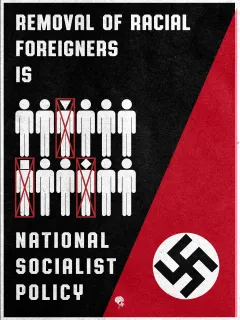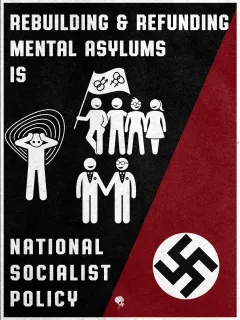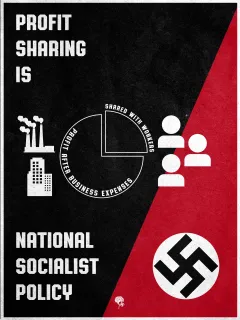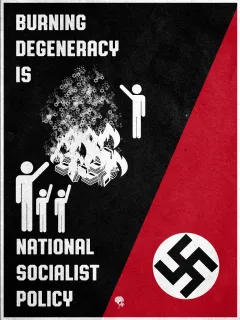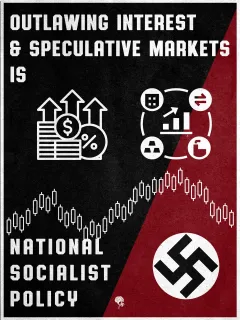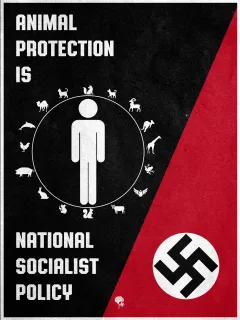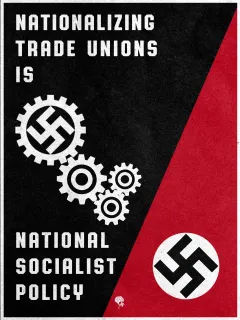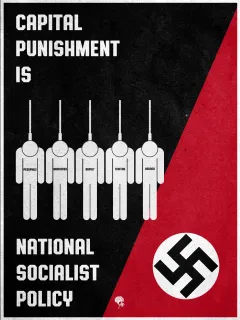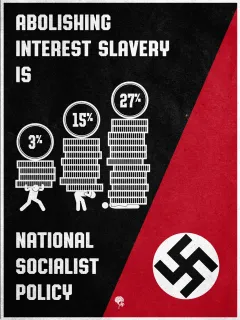Memorandum On Certain Aspects Of The Bolshevist Movement In Russia. Part II. Economic Results Of Bolshevist Control.
II. ECONOMIC RESULTS OF BOLSHEVIST CONTROL.
1. BLAME ON OTHERS.
The economic collapse of Soviet Russia is admitted by the Bolsheviks themselves, as is seen in some of the quotations from their own newspapers given below. The Bolsheviks, however, blame the incompetence of the old Tsarist regime, and of the Lvov and Kerensky governments, and economic isolation or blockade for the desperate situation to which they have brought Russia. Some of these factors have indeed contributed to the breakdown of the economic life of the country. But Bolshevist theories and methods have unquestionably been the main cause of the chaos one finds in Soviet Russia after two years of the Bolshevist regime.
2. ABANDONMENT OF PRINCIPLES.
The admitted failure and consequent abandonment of many of their economic tenets may, it is hoped, be analyzed in a subsequent memorandum. "Nationalization" in the sense of "communization" of the land would seem to have been definitely rejected, though only during the last months. The Supreme Soviet of National Economy, the highest Soviet authority for all economic problems, has come under the control of a very small group of men. Workmen's control was abolished after a few months of trial. These facts are frankly admitted by the Bolsheviks themselves.
3. POLICY OF DESTRUCTION.
During the first period the avowed aim of the Bolsheviks was first of all to destroy all the institutions of the old order: (See Lenin's Theses of March, 1919, Appendix II, p. 25.) It was emphasized that this had to be done before constructive work could be undertaken. In October, 1918, the constructive period was supposed to have arrived. But as it was somehow delayed in economic fields, the Bolshevist sympathizers began to emphasize constructive efforts along social and educational lines. As already pointed out, social reconstruction and educational work has been limited to the constantly decreasing minority of the urban proletariat in the large cities. The majority of those who have observed the Bolsheviks at work, unanimously agree that there has been little evidence of constructive accomplishments, even when the Bolsheviks abandon their principles, falling back into some of the so-called capitalistic methods, and bringing in “bourgeois" experts. Others emphasize that the majority of the Bolshevist administrators have practiced and extended the generally recognized, and condemned, abuses of the "capitalist" system, to the distress of such idealists as may be among them. (See reports on All-Russian Extraordinary Commissions, which combat speculation, as well as counter-revolution and sabotage, Appendix VI, p. 32.)
4. THE BUDGET.
It is naturally difficult to document from the Bolshevist newspapers the statement respecting the absence of constructive accomplishments. They publish their budget for the first half year of 1919, showing a deficit of some 30,000,000,000 rubles. A study of the items of this budget shows the large expenditures for their governmental machinery: “All-Russian Central Executive Committee - 459,156,743 rubles”; and enormous appropriations for the “Red Army - 12,149,770,487 rubles”. The Bolshevist publicists, in discussing the budget, try to
16
explain away this enormous deficit. (See article in Ekonomicheskaya Zhizn, May 21, 1919r Appendix XIV, p. 39.) One writer, in the Severnaya Kommuna of March 23, 1919, finds the solution:
The deficit of 28,744,702,112 rubles can be covered only by emission of paper money. This is an inevitable situation until the economic restoration of the country, and until the government has at its disposition, as the result of the nationalization of production and commerce, the greater part of the articles of consumption. The economic restoration depends on the reconstitution of Russia and its entering into commercial relations with foreign countries.
The writer, however, calls attention to the depreciation of the ruble, and to the general high cost of living and shortage of products in other countries:
The budget figures are certainly colossal, but it is necessary to consider the depreciation of the ruble; 50,000,000,000 rubles become in reality 5,000,000,000, which is normal in view of contemporary high cost of living and shortage of products in the whole world.
5. ISSUE OF PAPER MONEY.
The Bolsheviks have in fact resorted to the expedient of issuing more paper money to meet the crisis they have produced. The Ekonomicheskaya Zhizn (May 21, 1919), which is the most important official publication on economic matters, gives the following table of the amount of paper money in circulation:
-
Rubles.
Issues before the revolution (March 1917)....................
9,950,000,000
Issued by the Kerensky government..............................
8,967,000,000
Issued by Bolsheviks to January, 1919..........................
36,353,000,000
-
Rubles.
(In the form of Tsar rubles (approximately)....................
20,000,000,000
Issued before the revolution (March, 1917)....................
9,950,000,000
Tsar rubles printed and issued by Bolsheviks....................
10,050,000,000
In the form of Duma and Kerensky rubles....................
35,270,500,000
Issued by Kerensky government...................................
8,967,000,000
Duma and Kerensky rubles issued by Bolsheviks.............
26,303,500,000
These figures are exclusive of the various issues made in order to supply local needs at various times.
In order to meet this situation, the following decree was issued on May 15, 1919:
For the purpose of gradual conversion of all the paper currency at present in circulation, which state of affairs is not in accord with the principles of the new form of government existing in Russia, as well for the sake of excluding from circulation of the various money substitutes, which have been issued to meet the shortage of paper currency, the Council of People's Commissaries has decreed to issue a new paper currency (1918 model) on the following basis:
The new bills will be issued in denominations of 1, 3, 5, 10, 25, 50, 100, 250, 500, and 1,000 rubles.
The aforesaid bills will be legal tender on the whole territory of the Russian Socialistic Federated Soviet Republic for any amount and in any institutions.
All moneys in circulation at present continue as legal tender on the same basis as the new money. The People's Commissariat for Finance shall determine dates and regulations governing the redemption of all moneys in circulation now for the new bills.
The emission of the new bills of 1918 model is to begin on the 1st of June, 1919, in the usual manner by the People's Bank.
The People's Bank has the right to issue bills above the limit established by the decree of December 25, 1918, in accordance with the actual needs of state economy in money.
V. ULIANOV (LENIN),
President of the Council of People's Commissaries.
N. KRESTINSKY,
People's Commissary for Finances.
V. BONCH·BRUEVICH,
Executive Secretary.
L. FOTIEVA,
Secretary.
(Ekonomicheskaya Zhizn, May 21, 1919.)
17
This decree refers to redemption of former issues, regulations for which will be published later. What the Bolsheviks really have in mind is to force the peasants to sell their products. This was explained very frankly by one of the commissaries:
Currency plans. - Zorin tells me that the Soviet Government has or had printed a new issue of currency which it is proposed to exchange for the old currency within the next three months. The details of the plan have not been completed, but he thinks that an exchange of ruble for ruble will be made up to 3,000; an additional 2,000 will be placed on deposit in the Government bank. That beyond 5,000 only a small percentage will be allowed to anyone, and that a limit of possibly 15,000 will be placed beyond which no rubles will be exchanged. Then the plan is, after a certain period, to declare the old ruble valueless. Zorin feels that as a result of this plan the new ruble will have some value and that the present situation in the country in which the farmer has so much paper that he refuses to sell any longer for money, will be relieved. This exchange would be followed later on by the issue of still other currency, the entire purpose being the more equal distribution of wealth and the gradual approach to elimination of currency. (Memorandum of W. W. Pettit, Apr. 4, 1919, to American Peace Mission. Hearings on Treaty of Peace with Germany before the Committee on Foreign Relations, United States Senate, p. 1288.)
6. DISORGANIZATION OF ADMINISTRATIVE MACHINERY.
The complete disorganization of the administrative machinery is frankly admitted by Rykov, the president of the Supreme Soviet of National Economy, in a statement to the Moscow Soviet on March 4, 1919:
We have 100,000,000 puds of coal, 10,000,000 puds of grain, and several million puds of fish at our disposal which we can not move. In the spring a part will spoil. Transport is impossible, as we have no fuel, and the situation regarding the want of it is that 2,000,000 puds of machine oil had to be used as substitute for want of liquid fuel. Railroad communication will have to be reduced, which will again reflect on the supply of food. We have, therefore, to utilize transport by river as soon as navigation is opened. We also will have to fight with the local Soviets, who often hide their stocks, as for instance the Yaroslav Soviet hiding 500,000 puds of petroleum. The textile industry is also in a critical state; up to 10,000,000 puds of cotton is wanted and flax is scarce, as the peasants spin for their own want or use it for heating purposes. A way out of these difficulties would be to take the Caucasus with its supply of petroleum and to increase productiveness of labor. At present we produce only 5 pairs of boots for 100 people, and however so many Kerensky rubles we would pay to workmen only 1 in 20 can receive a pair. (Severnaya Kommuna, Mar. 7, 1919.)
7. PRODUCTIVITY OF LABOR.
The official organ of the trade unions of Petrograd, the Trud, of April 28, 1919, in discussing the closing down of 19 textile mills, notes the following reasons for the economic chaos:
Of great significance in our textile crisis is also the inefficient using of what could be used, as the productiveness of labor has dropped to nil, while there is not even a hint of labor discipline, and the machines have become useless as the result of careless handling, and their productive capacity lowered.
A similar situation had developed in Moscow:
At a conference of the main administrative boards of textile enterprises the question of closing down textile factories was discussed. As a result of the debates it was resolved to consider inexpedient the closing down of factories, to recognize as necessary only the partial closing down in dependence on local conditions and the situation of the various enterprises of the textile industry.
It was also resolved to take measures to preserve the basic groups of workmen in these enterprises, and to establish them in necessary work during the period of the closing down of factories. It was also resolved to use the period of closure to make repairs and to lay in supplies of raw material and fuel, and also to use these workmen for agricultural work. The question of closing down all textile industries will be decided finally at a joint conference of representatives of the main administrative board and of the trade union of textile workers. (Moscow Izvestia, Apr. 3, 1919.)
8. INDUSTRIAL COLLAPSE.
One of the results of the disorganization of the textile industry was the following:
The official estimate of cloth needs for Moscow for 1919, its population being given as 600,000 adult males, 700,000 adult females, and 300,000 children, is as follows:
-
Arsheens.
Heavy cloth..........................................................
2,366,670
Light cloth............................................................
12,116,670
Cotton cloth..........................................................
52,066,670
During September, October, and November altogether 5,000 000 arsheens of cloth have been issued to the population, which is considered one-third of the actual needs. (Izvestia, Feb. 6, 1919.)
146315-1-5
18
Other branches of industry were collapsing in the late autumn of 1918, at the very moment when it was said that the "constructive period" had arrived in Soviet Russia:
The quantity of benzine is so small that "Provodnik," (one of the largest rubber manufacturing enterprises of Russia), has only enough to last for two months; the factories of "Bogatyr" are still more inadequately supplied with rubber. The stocks of rubber are barely sufficient for another two months' production. The number of workmen employed has fallen from 32,000 to 7,500. (From the official Bolshevist newspaper, National Economy and Finances. Nov. 12, 1918.)
The disorganization of sugar manufacture and beet-root production led to an almost total lack of sugar. The occupation of the Ukraine by the Germans was emphasized as the cause of this particular crisis. There was frank admission, however, that disorganization within Soviet Russia also was a contributing factor. The Red Army was to be supplied with sugar, however:
A total lack of sugar is inevitable. Out of the 238 sugar manufactories, only 32 are on the territory actually belonging to the Soviets. The majority of these factories are out of working order. On the other hand, the land planted with beet root is very inconsiderable. At the most it would only be possible to produce 7,000,000 puds of sugar if the ground planted (actually 10,000 desiatins) were increased to 70,000 desiatins, The population needs at least 35,000,000 puds of sugar. Therefore, it is to be feared that only the Red Army will be able to obtain sugar next year. (Official newspaper, National Economy and Finances, Nov. 12, 1918.)
Many other Bolshevist statements, such as the following, might be quoted to show the economic chaos that has come to Soviet Russia under the Bolshevist economic program:
Out of 33 cement factories existing in Russia, only 14 are in a position to be used, but on account of the shortage of fuel, none of those factories are working at present. The reserves of cement amount to 1,080,000 tons, whereas formerly, the annual production amounted to 18,000,000 tons. If 50 per cent of the present actual annual production of coal were used for the production of cement only three factories could work, thus producing the annual output of 1,600,000 tons. (National Economy and Finances, Nov. 12, 1919.)
9. BREAKDOWN OF TRANSPORTATION.
The breakdown of all means of transportation has been the most serious aspect of the situation. Even river transportation, which is of great importance in Russia, has become disorganized:
Fifty per cent of the Russian internal steam and sailing mercantile fleet was not in a condition to resume navigation at the beginning of the present season, on account of the lack of workers, fuel, and the decrease in laborers' productivity. Altogether 1,407 steamers were registered and 2,146 other boats. (Moscow Izvestias, May 1-14, 1919.)
The railways are going to pieces in the literal sense of the phrase; locomotives have been scrapped at a disastrous rate and few are being produced:
At a meeting held in connection with the strike at the Putilov factory, Zinoviev said that from August, 1918, to February, 1919, the factory had only turned out 5 locomotives. For the year 1918 the factory had cost the State a deficit of 58,000,000 rubles. (Severnaya Kommuna, Mar. 15, 1919.)
An American representative reports from Finland, under date of August 27, 1919:
A report of the Commissariat of Railroads shows that there are only 250 locomotives now in commission in Soviet Russia. Of these 21 are operating on the Nicholas Railroad (Petrograd-Moscow).
The incompetence of the Bolshevist administrative departments has been described in published accounts by Russians who have served under the Soviet Government. German and English newspapers have published the personal experiences in Soviet offices of British employees or German prisoners who had joined and worked with the Bolsheviks. Items in Bolshevist newspapers give less detailed but very definite pictures of muddling and lack of foresight:
From August, 1918, to February 20, 1919, the food supply department had bought up or requisitioned 82,633,582 puds of grain. Of this amount 22,245,172 puds could not be moved owing to the shortage of engines. A considerable portion of the above grain has since rotted. (Pravda, Mar. 15, 1919.)
The latest reports from American representatives stationed on the border of Soviet Russia give the prevailing prices in Petrograd for September 1, 1919:
Butter, 360 rubles a pound; salt, 91 roubles a pound; black bread, 130 rubles a pound; dog meat, 90 rubles a pound; and wood, 2,000 rubles a sazhen (approximately a half cord).
19
10. FOOD SUPPLY.
A catastrophic situation with respect to the food supply is the natural result of what has been described above. This is reflected in the decree of the Council of People's Commissaries of February 28, 1919:
At the present moment horses are being killed for meat in large quantities and in a disorganized manner. Not only are horses that can not be used in the army or for work being killed, but also horses which might be used successfully by the peasants.
This state of affairs threatens catastrophe, interfering with the proper supply of the army, and also of the peasants, who in spring may not have sufficient horses to cultivate the fields.
In order to protect the horses within the limits of Petrograd: (1) It is absolutely forbidden to kill horses capable of work; (2) may be killed for meat horses with diseases, defects and wounds which make them incapable of work, and also such as have been discarded by the army, which can not be used for any kind of work; (3) the determination of incapacity of horses for work is entrusted to veterinary departments of Soviet institutions on whose orders horses may be killed * * * (4) horses deliberately crippled or made incapable of work in order to secure permission to kill will be confiscated and turned over to the local supply organs, and all persons guilty of such acts as well as persons found killing horses without the permission indicated in point 3 will be brought to trial before the Revolutionary Tribunal.
V. ULIANOY (LENIN),
President of Council of People's Commissaries.
V. BONCH-BRUEVICH,
Executive Secretary.
L. FOTIEVA,
Secretary.
(Izvestia, Feb. '28, 1919.)
11. DISTRESS IN AGRICULTURAL DISTRICTS.
Economic distress is not confined to the cities. An American representative reports from Finland under date of July 2, 1919:
The agricultural situation is desperate. All farm equipment stolen from the landlords' estates at beginning of the revolution is now spoilt, and there is no one to repair it, and it would not be of much use anyway as there are no seeds, and persons possessing do not intend sowing them, but try to sell on the sly, as the Bolsheviks took the last autumn crop from the peasants at a low figure. Peasants just cultivate sufficient for their own needs and a quantity, which is allowed, is kept. Former private estates are managed by a commission of all kinds of rabble or by a Soviet steward. In most cases all that was left of the estate has disappeared; enormous accounts are presented and money received, and except immense losses the estate produces nothing. Live stock formerly stolen and sold by the Bolsheviks now is requisitioned from the richer peasants. (For full text see Appendix XIII, p, 35.)
12: SUMMARY.
A well-known Russian Socialist and Revolutionist, Gregory Alexinsky, came out from Soviet Russia in the late spring of this year. He was interviewed for the Copenhagen Social-demokraten and the interview was forwarded to Washington. This able summary of economic conditions in Soviet Russia has already been released to the press by the Department of State:
The condition of affairs in Bolshevist Russia is very distressing. The majority of the industrial enterprises are not operating. In the Moscow district 63 textile factories stopped working last fall, and the same picture appears with respect to the textile industry in the vicinity of Ivanovo-Vozesensk near Petrograd, etc. The chemical industry, the paper industry, and many others are likewise in a miserable condition.
The Bolshevist Government has done everything to keep the work going in the plants that produce ammunition, but nevertheless many of them are shut down. Owing to the lack of rolling stock transportation is not good. Locomotives and cars needing repairs are so numerous that the workshops are unable to cope with the repairs.
In order to increase production in Russia the Bolsheviks already have reintroduced the forms which existed prior to the socialization, particularly payment for the piecework, the premium system, etc. In short, parity of wages does not exist.
This lamentable picture of our industry's decay has, he continues, led to terrible complications for the workmen on account of the great shortage of provisions and an enormous increase in prices. Bread, "black bread," rye bread because there is no wheat left, costs 35 to 40 rubles per pound in Petrograd; sugar, 180 to 200 rubles per pound; butter, 140 to 180 rubles; tea, 200 rubles; men's footwear, 1,200 to 1,500 rubles per pair, etc. Horse meat costs 30 rubles per pound. In Moscow prices are about on the same scale. On the big market in Moscow (Sucharevskaya) dog meat is
20
being sold openly, and the official financial gazette publishes statistics showing fluctuations in the price of such meat (5 to 7 rubles per pound). Even a box of matches costs between 3½ and 4 rubles.
On account of shortage of provisions, fuel, soap, and other commodities that are absolutely indispensable for the public health and welfare contagious diseases are spreading everywhere. In Moscow the official statistical bureau calculates 10,000 cases of contagious diseases per week; of that number 8,000 cases are typhoid fever. In Petrograd 30 per cent of the patients in the communal hospitals die of ordinary consumption which is the result of famine.
In Petrograd there are only 700,000 inhabitants left out of 2½ millions.
(For full text of interview see Appendix XV, p. 41.)






